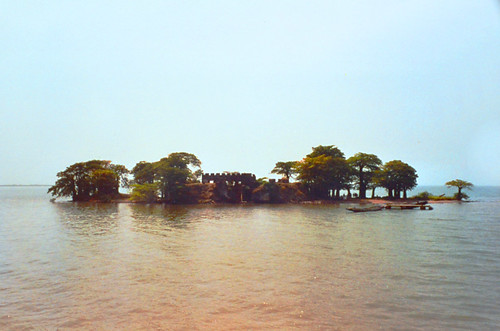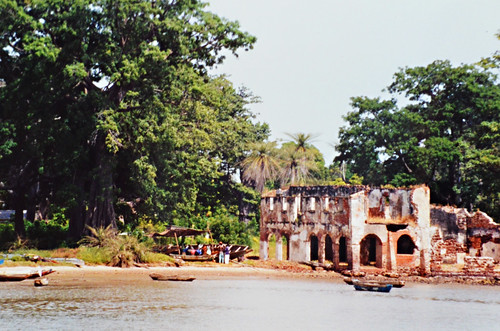James Island, a UNESCO World Heritage Site at the mouth of the Gambia River, is slowly disappearing; the rising Atlantic Ocean in danger of erasing this fascinating and horrific landmark.
The Gambia River meanders inland for 500 miles; it was a gateway for the first Europeans to gain access to the heart of Africa and a key merchants’ route; especially regarding the trading of slaves.
For 400 years, James Island was a holding point for slaves en route to the Americas. For up to a period of a month, Africans would be packed into tiny cells waiting for a ship to transport them to the other side of the world. Sometimes a couple of dozen were squeezed into cells no bigger than a large cupboard.
It’s claimed that a slave would be offered their freedom if they could swim from the island to the banks of the river. After a couple of weeks ‘enjoying’ the hospitality on James Island, they stood no chance at successfully covering the distance.
At one point there was a fort, slave prison, governor’s house, blacksmith and even a store. Now, because of the rising water, there’s only a handful of ruins… and a lot of spiders.
Ironically, James Island’s role in history was turned on its head when Britain abolished slavery in 1807. Instead of acting as a prison for slaves, it became a base for British troops whose objective was to put an end to the traffic of slaves coming out of the Gambia River.
It’s difficult to get your head around the fact that a tiny piece of land, even if it did used to be bigger, played such an important part in the beginning and the end of the slave trade.
Other military installations, including the Six-Gun Battery and Fort Bullen were constructed at the mouth of the river to help put an end to the flow of human traffic. Those and other remnants of a colonial past are visible on the river’s green, leafy banks.
That anyone still knows about James Island is largely down to author Alex Haley whose book Roots brought James Island and the nearby village of Juffureh to the attention of the world again in the mid 1970s. The novel and subsequent TV series had such an effect that it became known as Kunta Kinteh Island, the name of Alex Haley’s ancestor who was taken from his home in the Gambia and sold as a slave in America.
Such was the impact of the book that over 40 years later, trips to James Island and Jufureh are still called ‘Roots‘ tours
Taking a ‘Roots’ tour might seem a wee bit on the tacky side but anything that educates us about the past is commendable and, thanks to a project set up by The Travel Foundation, it also directly benefits the local population.
Jack is co-owner, writer and photographer for BuzzTrips and the Real Tenerife series of travel websites plus lots of other things. Follow Jack on Google+








Be the first to comment